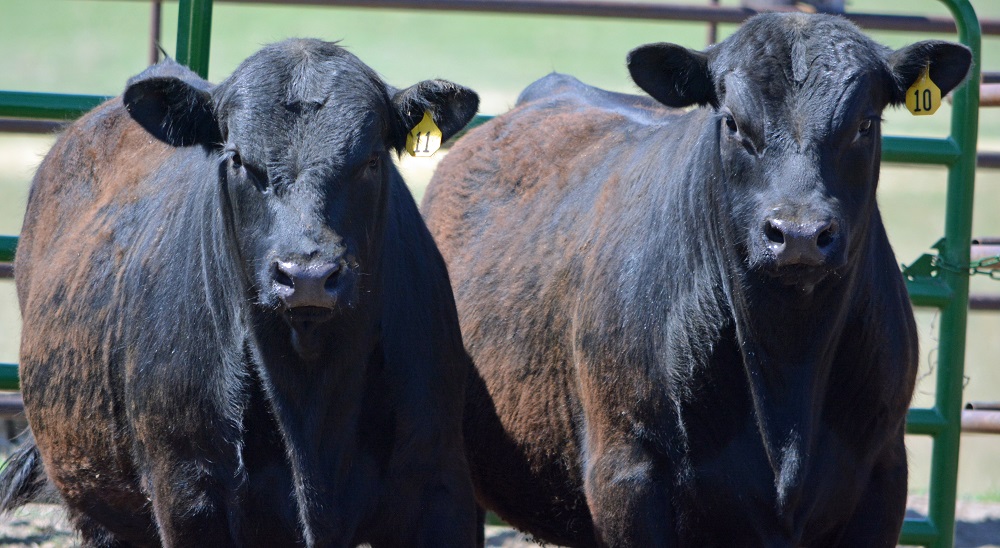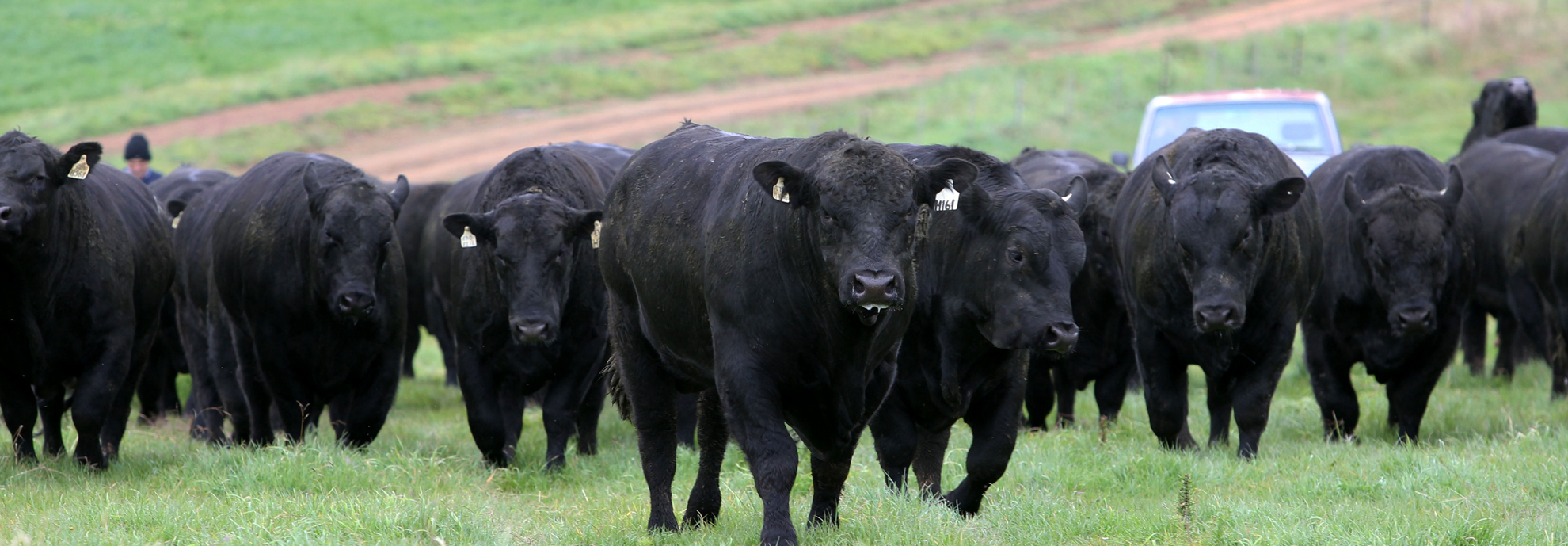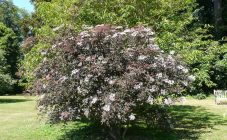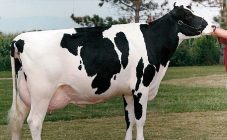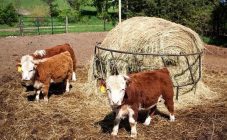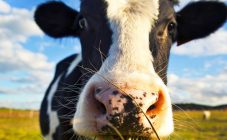Content:
Currently, the most popular area in animal husbandry is the breeding of cattle (cattle). Milk and meat with excellent taste are obtained from these animals. There is no need to talk about the benefits of cow's milk and dairy products derived from it - this is well known to everyone.
Also, in most countries of the world, at present, of all categories of meat, beef is most highly valued - low-fat healthy meat with good taste. But beef is of different types. The most valuable is marbled meat, which is obtained from Aberdeen Angus cows, the most famous breed of beef cattle. Why Black Angus cows are so popular among farmers around the world will be discussed below. So that even a novice farmer can choose the right Angus cow for breeding and in the future, if desired, raise a whole herd of Aberdeen Angus bulls and cows, it is worthwhile to study in more detail the main characteristics of this cattle, the nuances of keeping, and much more.
Description of Angus cows and bulls
The history of this cattle begins in the 18th century. It was then, through natural selection in the Scottish counties of Aberdeen and Angus, that the first specimens of the new breed of cows appeared. The ancestors of Black Angus bulls were animals that were used as draft - they plowed the land on them. And their meat was tough, sinewy and not too tasty.
At the end of the XIX century. The Aberdeen Angus breed of cows was refined, some of the representatives of this species of cattle were brought to North America in Kansas. Over the past several decades, the number of Angus gobies has grown significantly. Local farmers appreciated this meat variety, especially the taste of these animals, because the population quickly bought up beef of this breed. And at the beginning of the last century, purebred Angus bulls were exported from the United States to different countries of the world, including Canada and Argentina. Aberdeen bulls even got to New Zealand and Australia, where they were brought from Great Britain.
But in Russia, the breeding of this breed of hornless animals began to be engaged in the second half of the last century. Aberdeen bulls, the main livestock of which was in this period in the Volgograd region, Stavropol Territory and in the Kazakh SSR, amazed with their power and rather calm disposition. The main breeding plant, which mainly bred these hornless animals, was the Paris Commune livestock farm.
There was also information that thanks to the efforts of Russian breeders in some farms of the Volga and Volgograd regions, Aberdeen cows appeared, most often black, giving good milk yield, which is not typical for beef cattle.
The growth of adults at the withers reaches 1.15-1.2 m, therefore they are classified as medium-sized animals.
The head of adult cows is less than average in size, the back of the head is small, the neck is short but thick. The chest is wide and deep enough, the withers and back are straight and even. The massive body is supported by short legs, and the muscles of the hams reach the hocks. The skin is thin, due to a sufficient amount of subcutaneous fat, it is loose, covered with soft black hair.
Characteristics of Angus cows and bulls (Aberdeen Angus breed)
One of the main advantages of the breed is its early maturity, as a result the young grows quickly and gains weight, but with age this process practically stops. Newborn calves have a body weight of about 23-26 kg, and by six months the grown up young weigh at least 175 kg. Moreover, the daily weight gain in calves during this period can be up to 0.9-1.1 kg.
At 1.3 years old, heifers can already mate. By the age of one and a half, individuals weigh about 520-540 kg. With a properly selected diet, an adult cow weighs about 640 kg, and an angus bull - at least 840 kg.
The bone skeleton of Angus is very strong, but weighs a little, so the meat yield at slaughter is high - about 70%.
The composition of the meat of these animals is characterized by fine marble fibers and thin layers of fat.
Breeding and general rules for caring for cows and Angus bulls at home
The basic requirements for breeding this breed are the same as for other varieties of cattle. The main requirements are to keep the barns clean and dry. The premises should be provided with good ventilation and there should be no drafts.
Cows of this breed are distinguished by a well-developed maternal instinct, they have enough milk to feed calves. And mother's milk is one of the main components for raising healthy offspring. Calves are not weaned from their mother until 9 months of age, until their weight reaches 220-225 kg.
When young animals are transferred to hotel stalls, they are kept for some time on a special diet, which includes:
- hay;
- feed concentrates.
Gradually, several types of corn are added to the daily menu, which is needed to give the mass its characteristic marbling.
Disadvantages and advantages over other breeds
The main advantages of the breed:
- quick adaptation to adverse weather conditions;
- when crossing with breeds of the dairy direction, the offspring will retain marbling, good taste of meat and black body color, and the cows will begin to give a sufficient amount of milk;
- slaughter meat yield is about 68-70% of live weight;
- the fat layer is located inside the muscle mass, giving the meat its characteristic "marbling". Fragrant, quite tender and tasty, it is a delicacy, it is acquired by chefs of leading restaurants famous for their cuisine;
- the breed is distinguished by early maturity, the heifers enter the mating period early, even their first birth goes without complications;
- these animals are slow, have a calm disposition, quickly get used to new conditions of detention;
- bags are made from Angus skins.
Advice and guidance from experienced breeders and veterinarians
The main thing in the cultivation of this breed of cattle is the preparation of an optimal diet, which directly determines whether the meat will have a characteristic marbling at slaughter or not. Therefore, experts advise farmers to carefully read the special literature, which describes an approximate menu of young animals for every day, before starting to breed Angus.
In general, the breeding of these animals for meat production is economically profitable, because marbled meat of such cows is highly valued in the modern market. This cattle does not require significant costs, with an optimally formulated diet, farmers will receive a tasty product that meets the standard.
